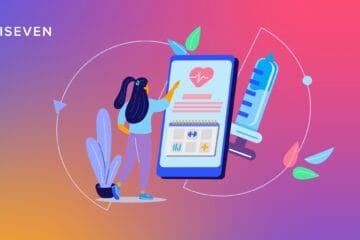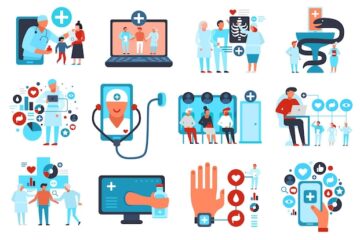
The 2016 Regulatory Convergence will begin with opening keynote remarks from R “Ray” Wang, noted expert on disruptive technologies and new business models. Hearing Wang’s thoughts on innovation and technology and how regulatory can keep up with the rapid changes should prove to be a timely and appropriate way to begin this year’s Convergence.
The healthcare products sector has seen the introduction and development of a number of disruptive technologies in recent years. The future of healthcare lies in groundbreaking tech like 3D printing and personalized medicine. But these new innovations also bring regulatory challenges.
Following is a short list of some of the disruptive technologies regulatory professionals should be tracking.
Contents
- 1 1. 3D Printing
- 2 2. Adaptive Clinical Trials
- 3 3. Gene Editing
- 4 4. Internal Drug Tracking
- 5 5. Personalized Medicine
- 6 6. Social Media
- 7 7. Track-and-Trace Barcoding
- 8 8. Wearables and Other Mobile Health Technology
- 9 9. Web-Based Screening for Clinical Trials
- 10 10. Web-Connected Medical Devices
- 11 Share this:
1. 3D Printing
3D printing, also called additive manufacturing, has incredible potential to deliver custom medical devices to patients directly in doctors’ offices, hospitals and other healthcare settings. It is already being used to create orthopedic devices, implants, prosthetics and in a number of other applications, but its incredible flexibility is also what makes it a challenge to regulate.
2. Adaptive Clinical Trials
Adaptive clinical trial designs are changing the way sponsors conduct clinical studies. Allowing changes to be made to a trial in progress can help improve efficiency, increase the chances of the trial’s success, and reduce costs and time to market. Building this flexibility into the process means sponsors and regulators must work together and communicate effectively.
3. Gene Editing
Gene editing tools like CRISPR-Cas9 are still pretty new, and the full implications are not yet clear, but what is clear is that the limits of what is possible though biotechnology are being redefined. Regulators will have to scramble to keep up, and the relative ease with which genetic material can be manipulated presents unprecedented ethical questions.
4. Internal Drug Tracking
Using internal tracking devices, such as electronic pills, to track whether a patient is taking his or her medication could be a major help to healthcare providers and patients, but it also poses privacy risks. It can simplify the process of getting important patient data, and help doctors better determine whether a treatment is ineffective or just not being taken properly. However, safeguarding patient information that is automatically transmitted creates an additional burden on providers and device companies.
5. Personalized Medicine
With initiatives like President Obama’s Precision Medicine Institute, the US is betting that “personalized” or “precision” medicine will be a large part of the future of medicine. The promise of a shift away from one-size-fits-all approaches to better, more targeted therapies is enticing, but has yet to be fulfilled. Advances are being made but the lack of coordination has hindered progress. Efforts like the US Food and Drug Administration’s (FDA) precisionFDA community research and development portal may help speed development of promising approaches.
6. Social Media
The widespread use of the Internet and social media has dramatically shifted how we communicate compared with just a few years ago. Most regulated companies are rightfully cautious in their use of social media, but even if they don’t actively promote regulated products in that space, they must still be vigilant about monitoring what is said online about them and their products, and the potential regulatory and enforcement implications. FDA has offered some guidance on companies’ responsibilities but there is still more than a little uncertainty.
7. Track-and-Trace Barcoding
Track-and-trace barcode technology can help regulators and healthcare systems track specific batches of medications, potentially keeping tainted, counterfeit or poorly manufactured drugs from reaching patients. But the technology also has the potential to give patients and their doctors new ways of communicating about medicines, by capturing barcode images with their smartphones.
8. Wearables and Other Mobile Health Technology
Chances are you have some kind of health-related app on your smartphone right now. According to FDA’s website, 50% of the more than 3.4 billion smartphone and tablet users will have downloaded mobile health apps by 2018. Never before has such powerful health-related technology been so accessible. FDA and other regulators simply cannot regulate all of these apps and devices, and most apps do not qualify as high- or moderate-risk devices, but regulators increasingly need to make decisions about what mobile tech to regulate.
9. Web-Based Screening for Clinical Trials
Screening potential participants for clinical trials can be labor-intensive, and web-based screening tools promise to help increase efficiency and limit in-person visits for those who aren’t eligible. The Association of Clinical Research Professionals, calls it “low-hanging fruit” to improve trials, and we can probably expect to see more of it in the coming years.
10. Web-Connected Medical Devices
The much-talked about “Internet of things,” where your car and your toaster are just as likely to be connected to the web as your smartphone or tablet, is becoming a reality. But when it comes to medical devices, the risks have life-and-death implications. Like wearables and internal drug tracking, connected devices pose a privacy risk, but perhaps more grave, is the potential for cyber hacking. Some security researchers have already drawn attention to vulnerabilities of certain devices, and regulators and manufacturers will need to work together to monitor cybersecurity concerns.
[Source: REGULATORY FOCUS]




